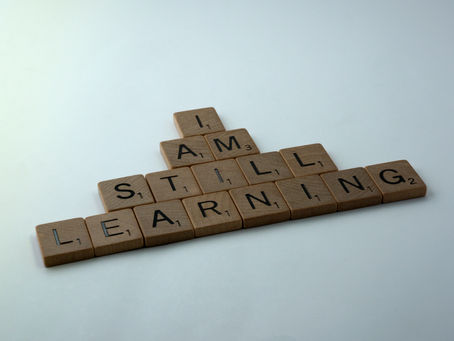top of page
Search
leadership & vision


The Strength of We
True community isn’t measured by how we plan together, but by how we hold one another when plans fall apart. Two years ago, when I got the call that my mom didn’t have many days left, my team showed me what true community looks like. They didn’t just cover for me—they carried me.
Angela Langlands
Nov 183 min read


When Leadership Becomes Culture
When leadership stops being something granted and becomes something grown, the culture of a school shifts. In our final years at the Western Academy of Beijing, our team gave up our individual spaces, blurred the lines between roles, and built a community office where every voice mattered. That’s when shared leadership stopped being a structure—and became who we were.
Angela Langlands
Nov 113 min read


When Bias Walks Into the Classroom
We all have biases — even in the classroom. The difference is whether they go unchecked or are challenged. In a learning community, shared and co-teaching offers a built-in safeguard: multiple eyes, multiple perspectives, and a chance for every student to be seen anew.
Angela Langlands
Nov 33 min read


When Every Day Feels Like PD
In a true learning community, professional development isn’t an event — it’s a way of teaching and learning together. Discover how everyday collaboration transforms teachers into continuous learners.
Angela Langlands
Oct 214 min read


But Why Not?
A hallway encounter between two brothers answers the question “Why learning communities?”—and reframes it as “Why not?” Because in a true community, no child is invisible.
Angela Langlands
Oct 142 min read


Parts: Building the Machinery of a Learning Community
Note to the reader: This post is part of a series using the People, Parts, Interactions thinking routine from Harvard’s Project Zero . Last week, I wrote about People as the heart of a learning community . This week, let's zoom in on the Parts . Looking at schools through a “parts” lens helps shift the conversation from “this is a great idea” to “this is actually manageable—and here’s how to do it.” Every school already has a lot of moving parts. The key is to make them vis
Angela Langlands
Sep 293 min read


People: the Heart of a Learning Community
People are the heartbeat of a learning community. Multiple teachers and mentors give students a fuller picture of themselves. Collaboration ensures flexible support, shared observation, and real-time professional growth. When adults work together, students thrive, and the team becomes a dynamic, responsive system.
Angela Langlands
Sep 224 min read


The Blueprint of Belonging: People, Parts, and Interactions
Teaching in isolation leaves students unseen and teachers overworked. Learning communities flip the script: multiple adults share responsibility, insights, and care, ensuring every child is visible and supported. Using frameworks like People, Parts, and Interactions (PPI) helps teams organize roles, structures, and collaboration. Start small, focus on the right people, and let shared practices evolve. Momentum, not perfection, creates belonging.
Angela Langlands
Sep 153 min read


Back to School Night: Showcasing the Power of a Learning Community
Back-to-school night can show parents more than schedules—it can demonstrate a true learning community. By introducing the full teaching team, sharing curriculum, and showcasing collaboration, families see that students have multiple mentors supporting them. This united approach builds trust and models collective responsibility.
Angela Langlands
Aug 282 min read


Leave Your Ego at the Door: The Hidden Key to Thriving Learning Communities
Collaboration thrives when teachers set ego aside. Humility opens space for trust, innovation, and student-focused decisions. Acknowledging uncertainties, rotating leadership, and celebrating colleagues’ successes keep the team strong. Choosing community over ownership sets the tone for a year of growth—for teachers and students alike.
Angela Langlands
Aug 133 min read


Teacher Planning Week: The Conversations That Move Teams Toward a Learning Community
Teacher planning week is more than icebreakers—it’s the foundation for shared ownership. Teams co-create agreements, plan collaboratively, and set routines that span classrooms. Small shifts, like rotating student groups or shared end-of-day activities, spark connection and reflection, helping the community focus on what’s best for every student.
Angela Langlands
Aug 24 min read


Start with Vision: Why Learning Communities Need Purpose Before Structure
Before rearranging desks or schedules, schools exploring learning communities must start with a shared vision. It grounds teachers, aligns decisions, and ensures collaboration centers on students. When educators share responsibility for all learners, every child benefits from multiple perspectives, and the school culture shifts from isolated classrooms to connected, thriving ecosystems.
Angela Langlands
Jul 232 min read


Let Me Help: Learning Communities
After nearly two decades in international education, I help schools move from intention to implementation in becoming true learning communities. I work side-by-side with leaders and teacher teams to clarify purpose, build trust, design supportive structures, and turn vision into sustainable practice.
Angela Langlands
May 111 min read
bottom of page